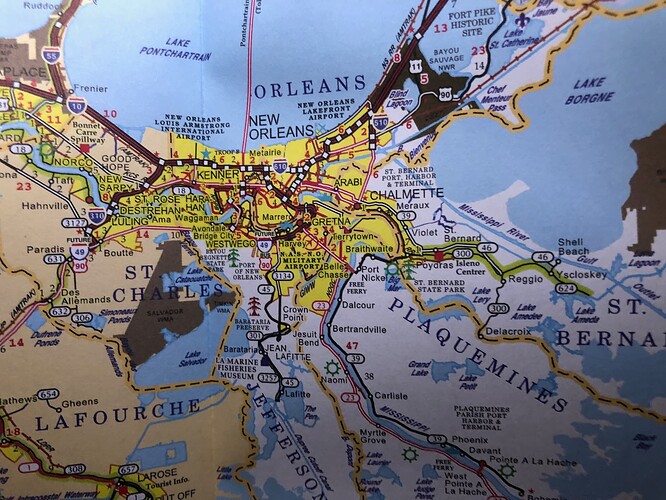I’d lean toward admin_level=6. As long as border_type=* contains city, that’s adequate for anyone who needs to know whether the city and county has anything in common with a stereotypical American city, even though the boundary is not just a city limits.
One possible test of San Francisco’s admin level is the maritime boundary around the Farallon Islands. Like California’s counties and unlike its cities, San Francisco has maritime boundaries into the Pacific Ocean, a consequence of the consolidation.
I don’t think we can definitively determine whether the net benefit to data consumers is positive or negative. It depends on the use case. We’ve talked a lot about forward and reverse geocoding in this discussion, because some of the participants are personally grappling with some geocoding challenges. For that use case, consolidating the San Francisco boundary leads to higher quality output, however surprised the developer might be about that outcome, and the admin level ultimately doesn’t matter as long as the number is higher than the containing boundaries and lower than the contained boundaries. A geocoder will “walk the tree” to figure out the hierarchy, which remains intact.
But I want to impress upon this group the importance of renderers in these discussions, because unlike geocoders, renderers need the specific values of admin levels to be predictable between neighbors, and no other tagging scheme can satisfy this need. For the purpose of depicting boundaries, a renderer doesn’t care about the territory’s designation or similarity to a stereotypical city; it only cares about the name and how deeply nested it is. As I described before, the nesting level affects the line treatment and label. In some maps, more local boundaries get fainter colors. In others, they get more dots and fewer dashes (or vice versa); you’re supposed to be able to count the dots between the dashes to determine the nesting level.
More importantly, the admin level affects the scale or zoom level at which the boundary appears. In Rand McNally’s Quick Reference World Atlas (rev. 2000) and Goode’s World Atlas (22nd ed., 2010), there isn’t enough detail to warrant more than two levels of boundaries. Notice how they gloss over the various regional distinctions between different kinds of boundaries. Whether it’s a state, province, etc., what they intend to show is a second-order boundary. Imagine a map that only shows third-order boundaries – should it show San Francisco’s boundary?
As a rule of thumb, we should use the minimum applicable value numerically. As you zoom in, the map continues to show the lower-order boundaries while progressively adding higher orders. If you choose too high an admin level for San Francisco, the border around the Farallons won’t appear until too late. If you choose a lower admin level for San Francisco, it’ll stick around even as you zoom in.
What happens when a boundary line happens to be both an international boundary and a second-order boundary? Of course, the map depicts only the international boundary, ignoring the second-order boundary, except perhaps as an edge label. Any map will show the boundary of San Francisco as a county boundary on every side, even if it still acknowledges San Francisco County by force of habit.
Regardless of the use case, admin_level=* is how we tag the order of a boundary, answering the question: “What does it subdivide?” San Francisco and the neighboring counties all subdivide California.
Earlier, I mentioned that in Ohio we do keep withdrawn cities and villages at level 8 rather than promoting them to level 7 alongside the townships they withdrew from. This is not only because of the convenience of keeping all the cities and villages at the same level. By leaving a gap at level 7, we’re saying that there’s something there – the paper township – but we choose not to map it.
This is the approach we’d take with San Francisco if we were to determine that San Francisco County does exist, but it’s too obscure to map. We’d take this approach with New Orleans if we were to come to the conclusion that Orleans Parish is too obscure to map. But as it is, those parish limit signs aren’t the only way motorists come into contact with Orleans Parish as they make their way to New Orleans.


